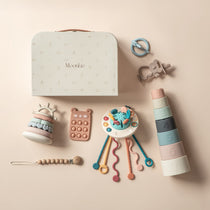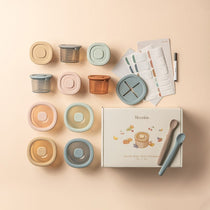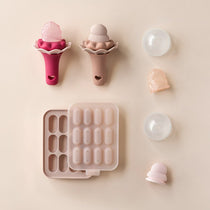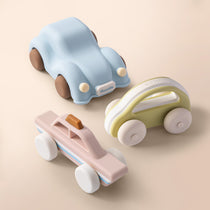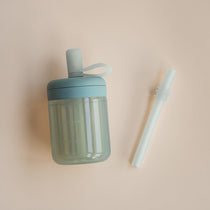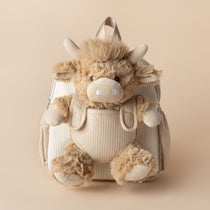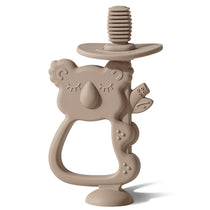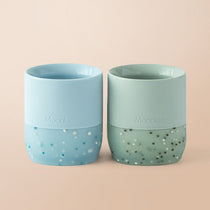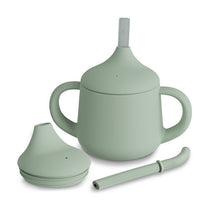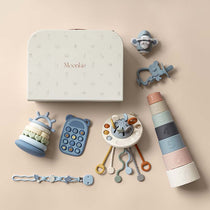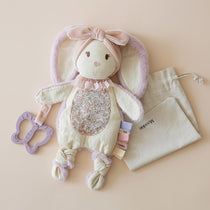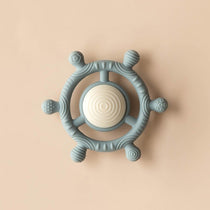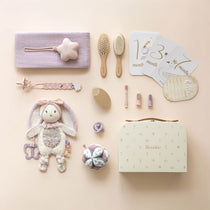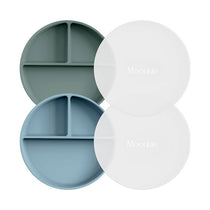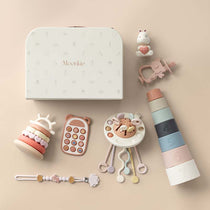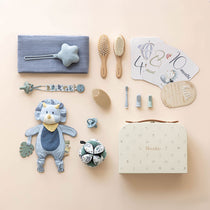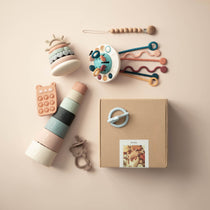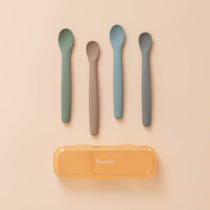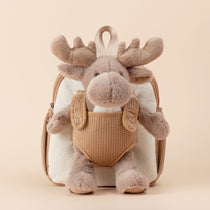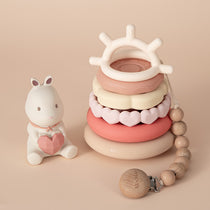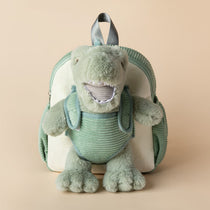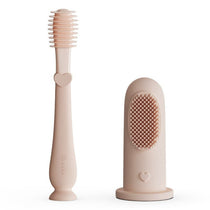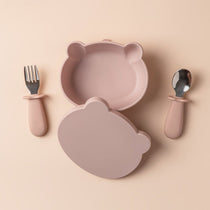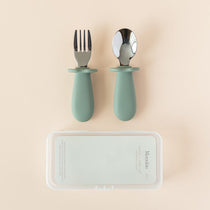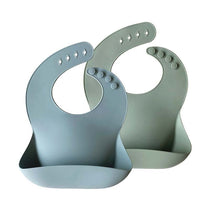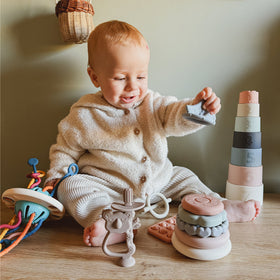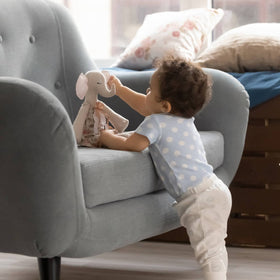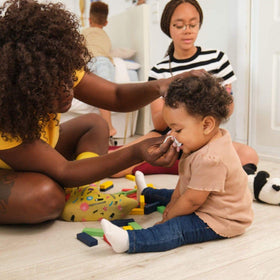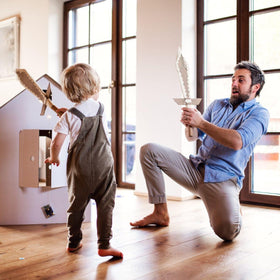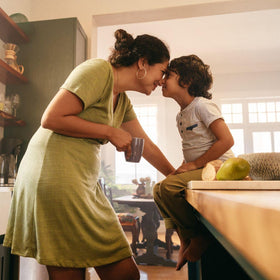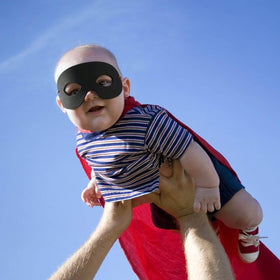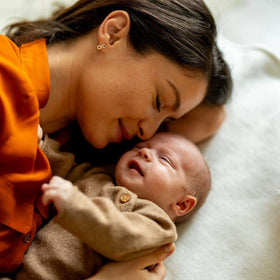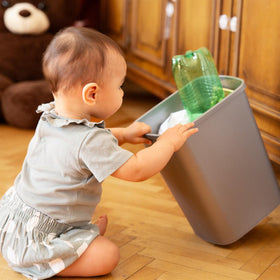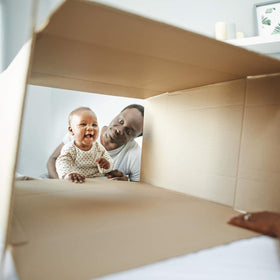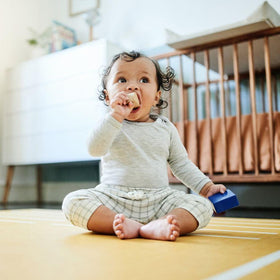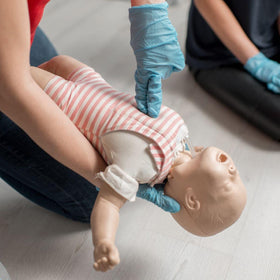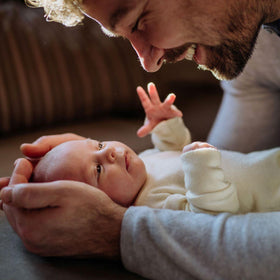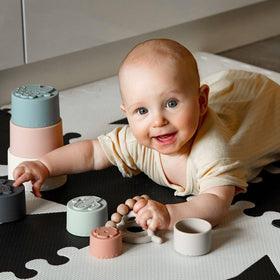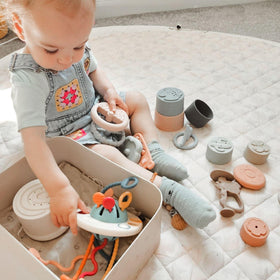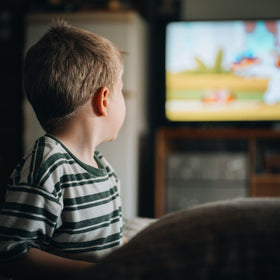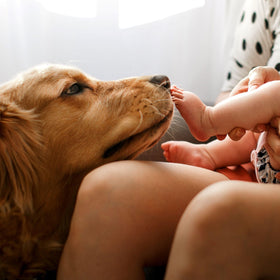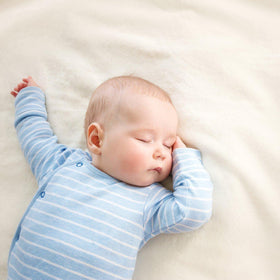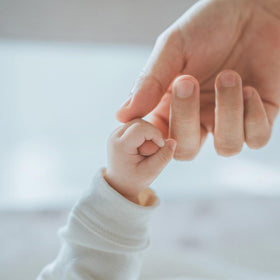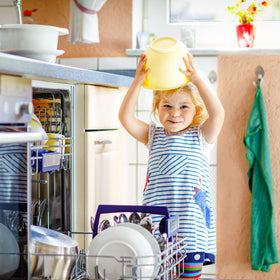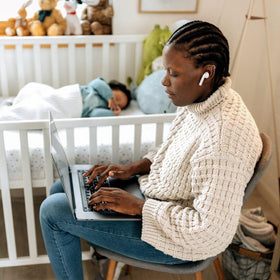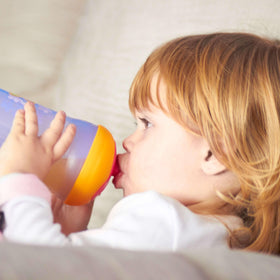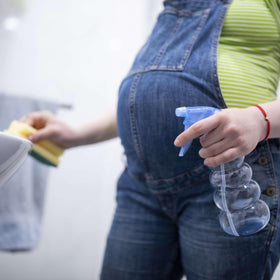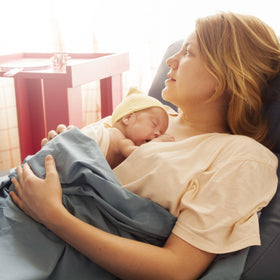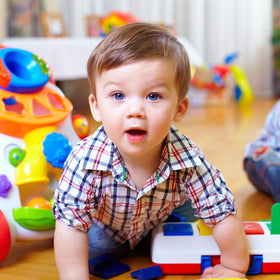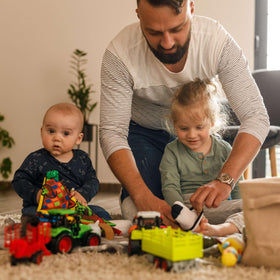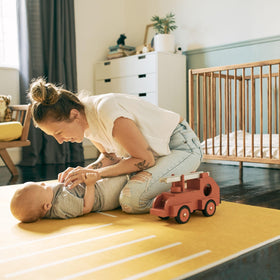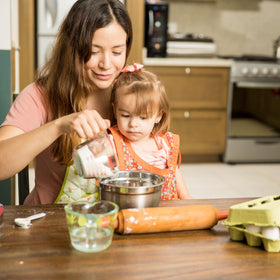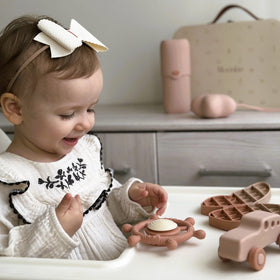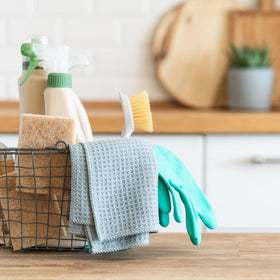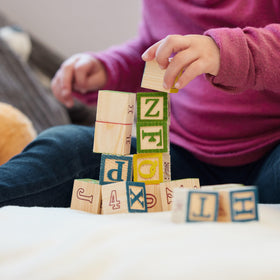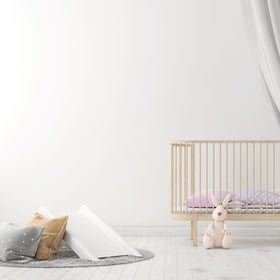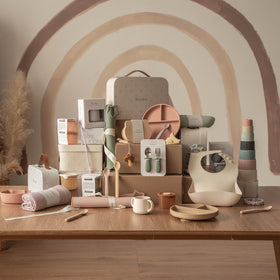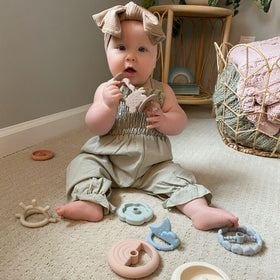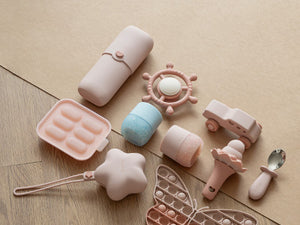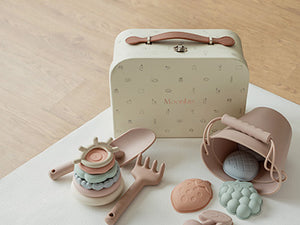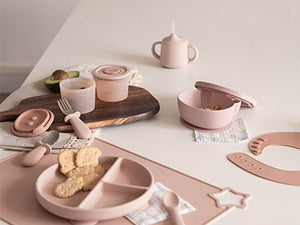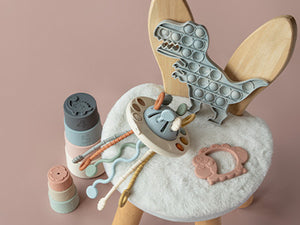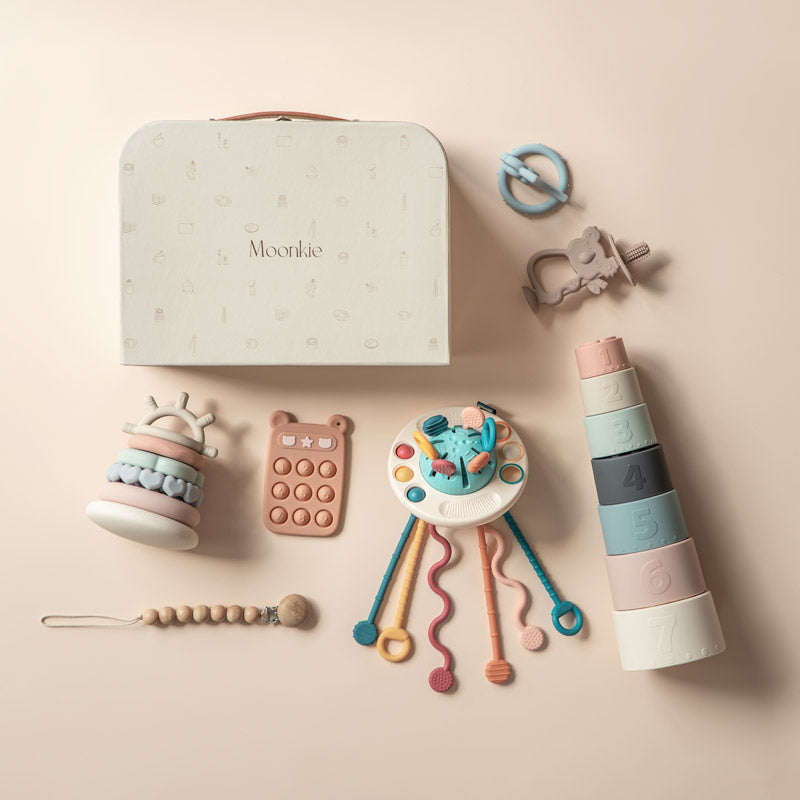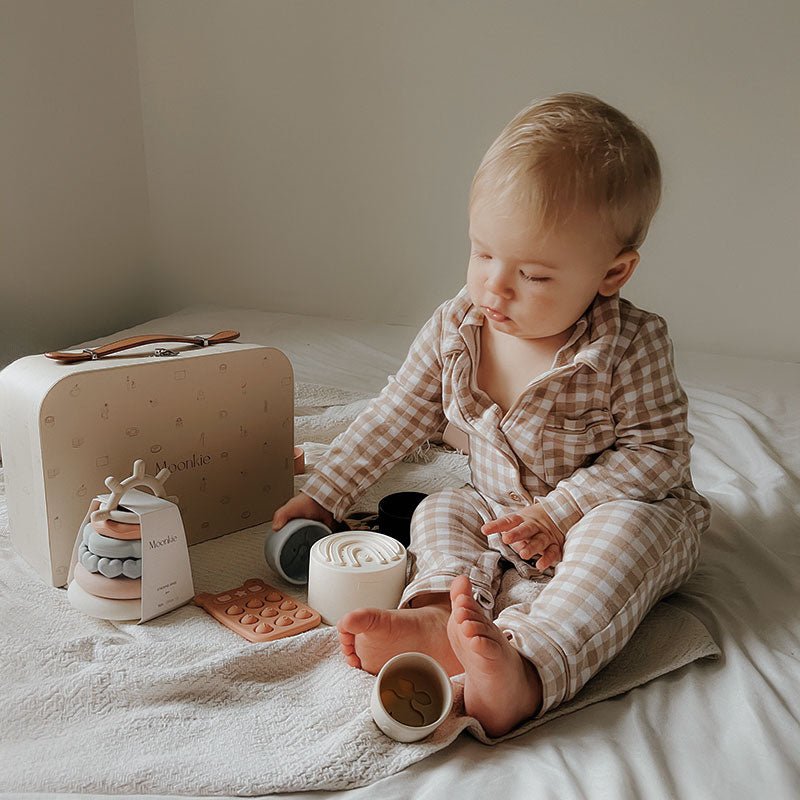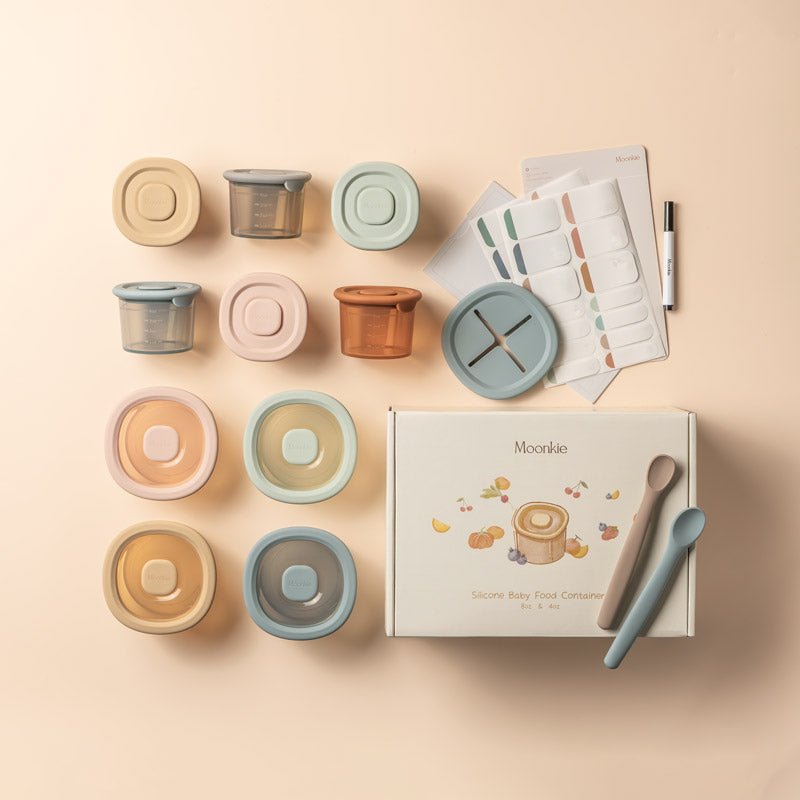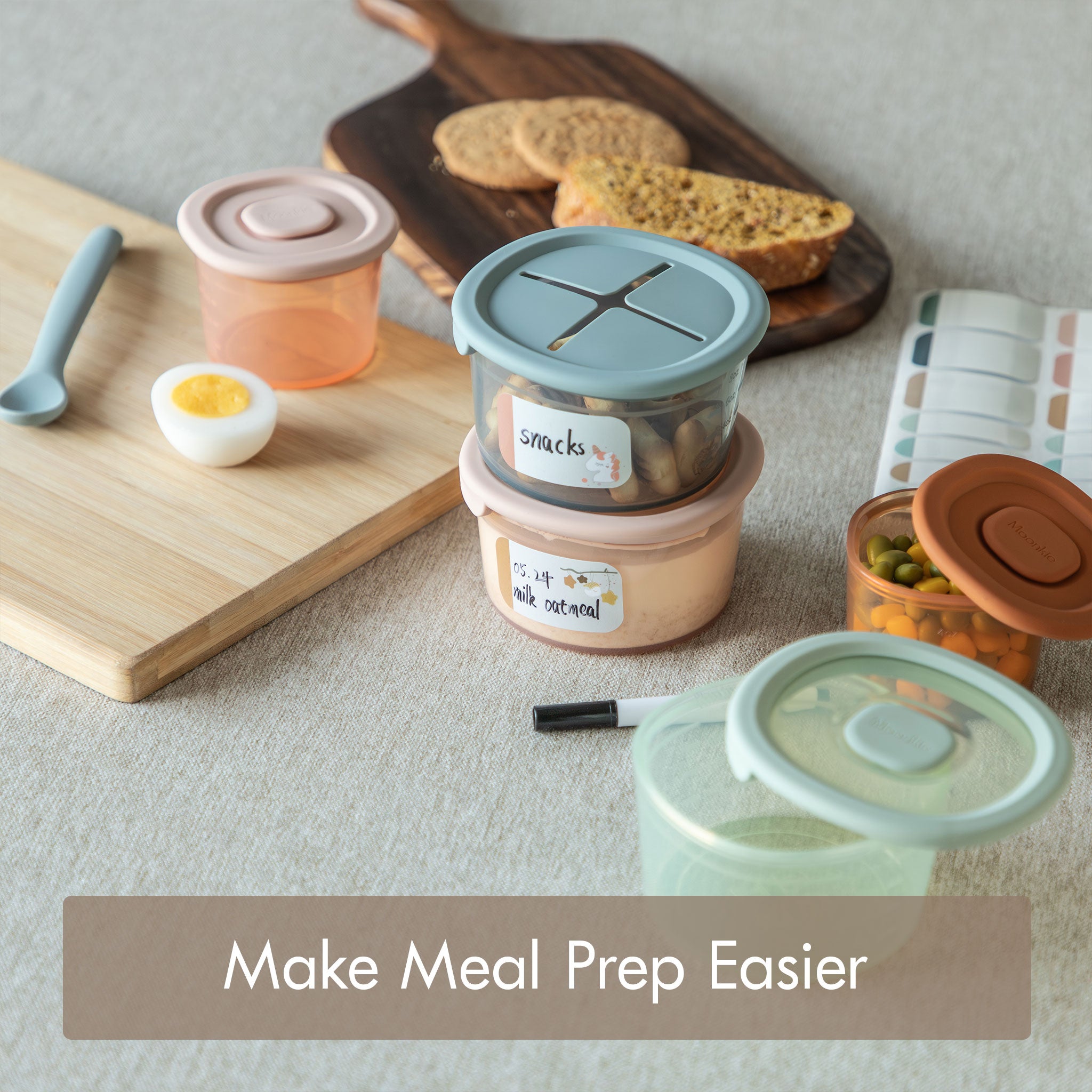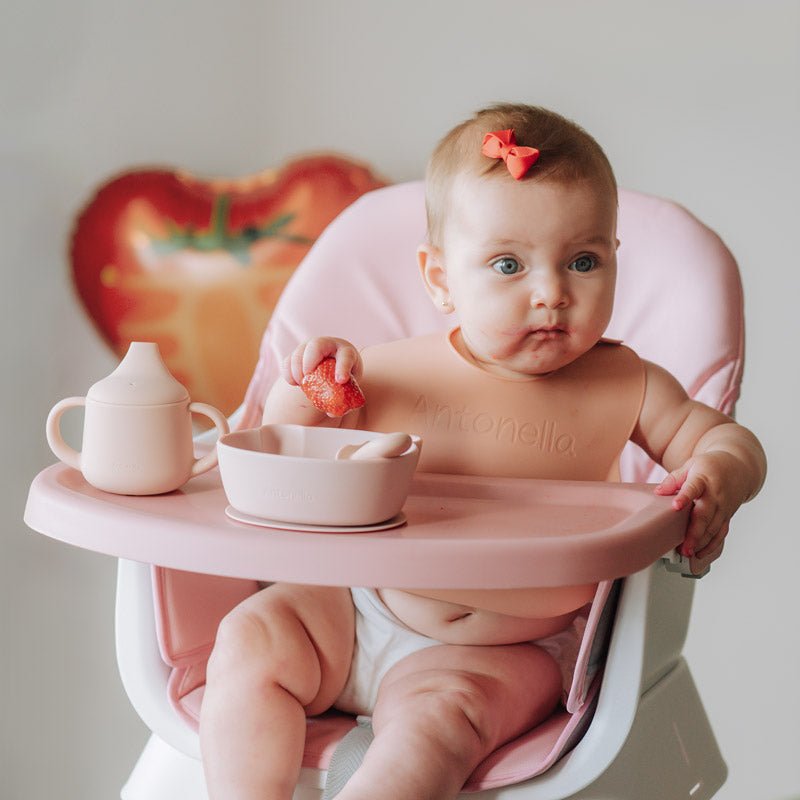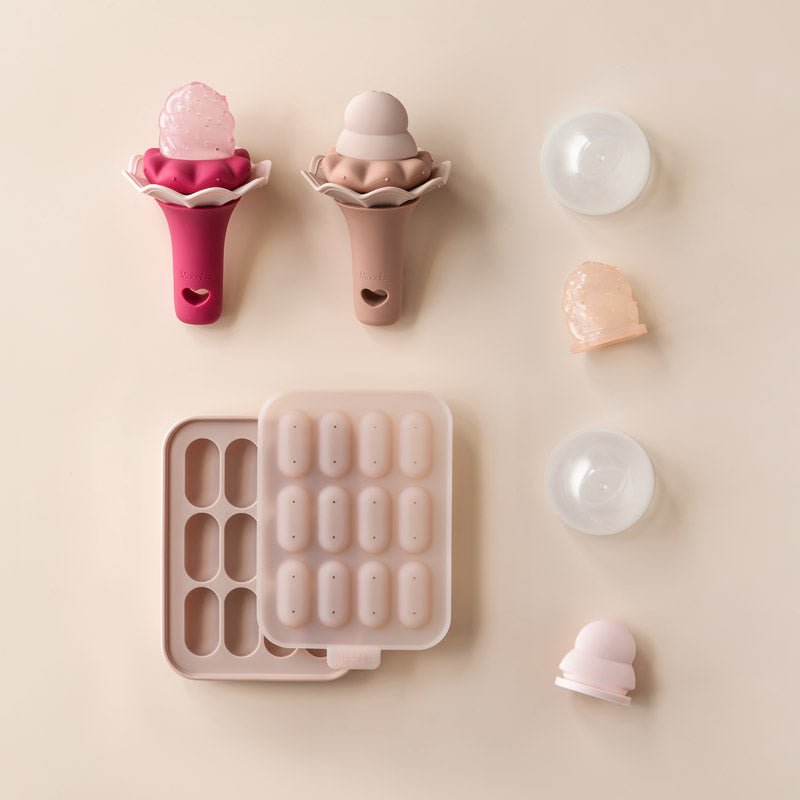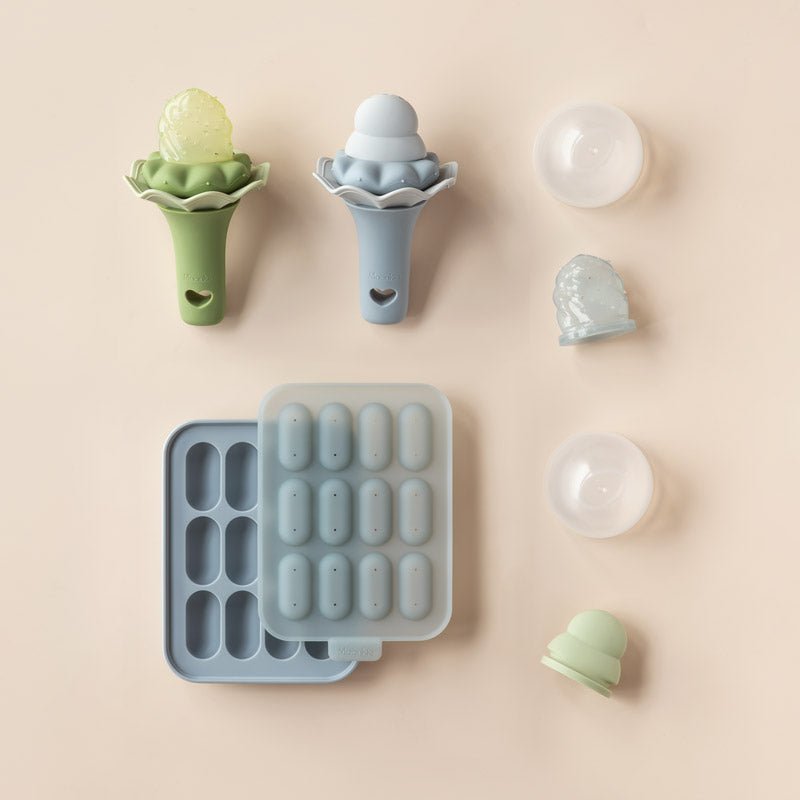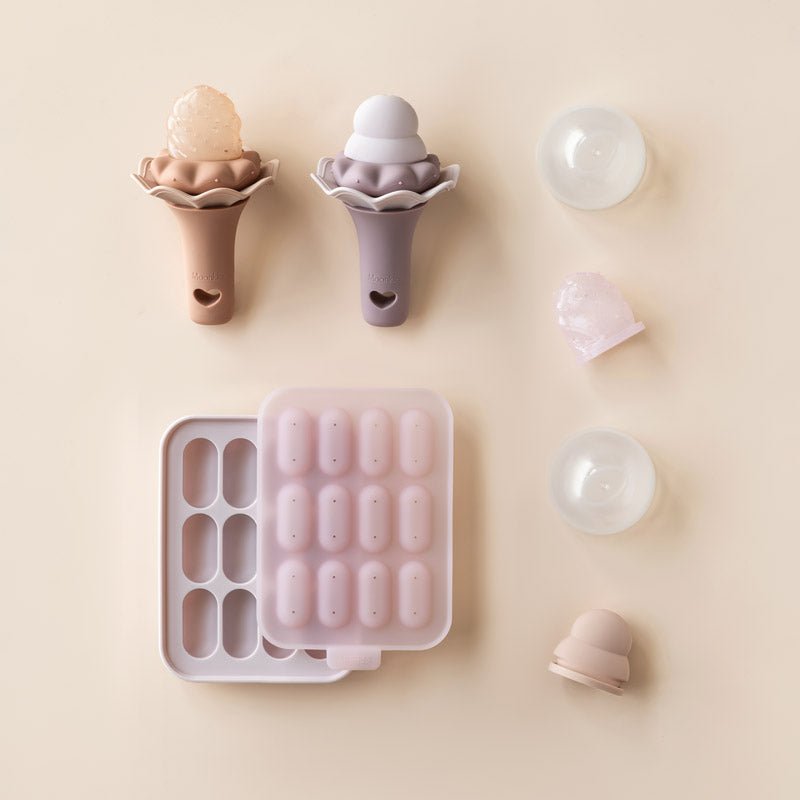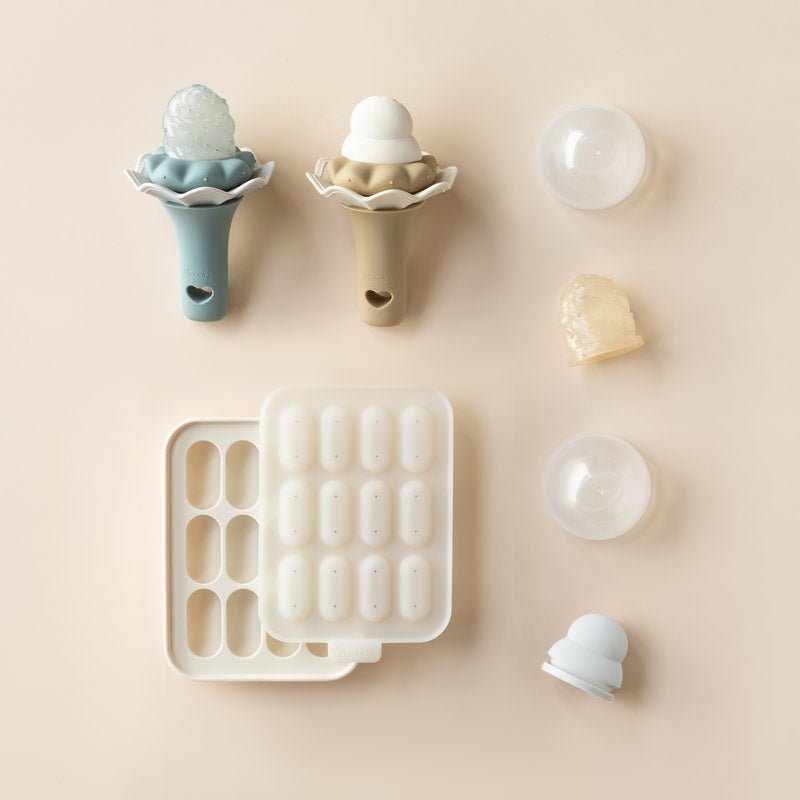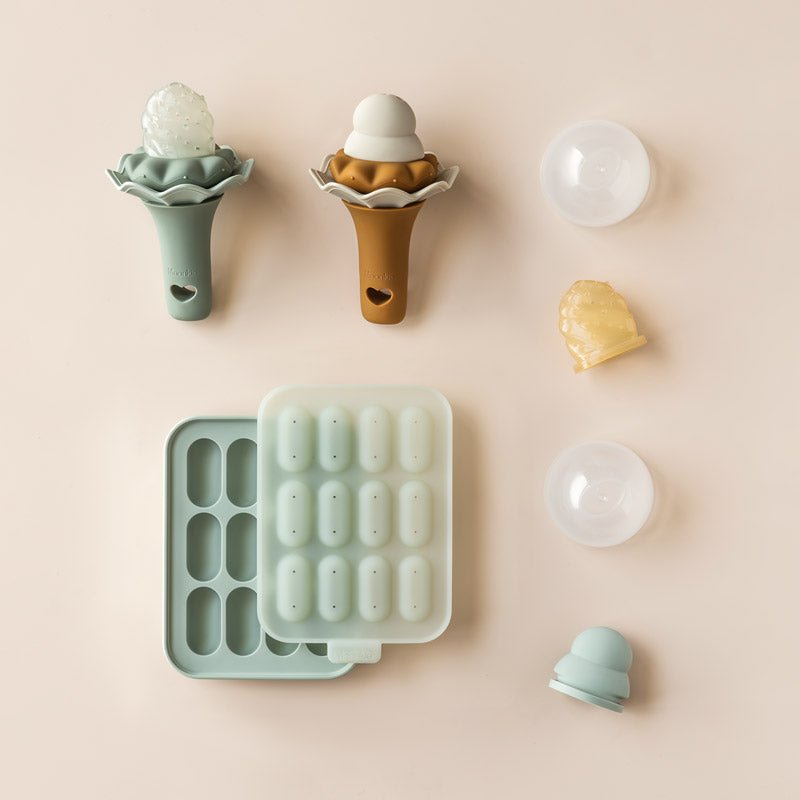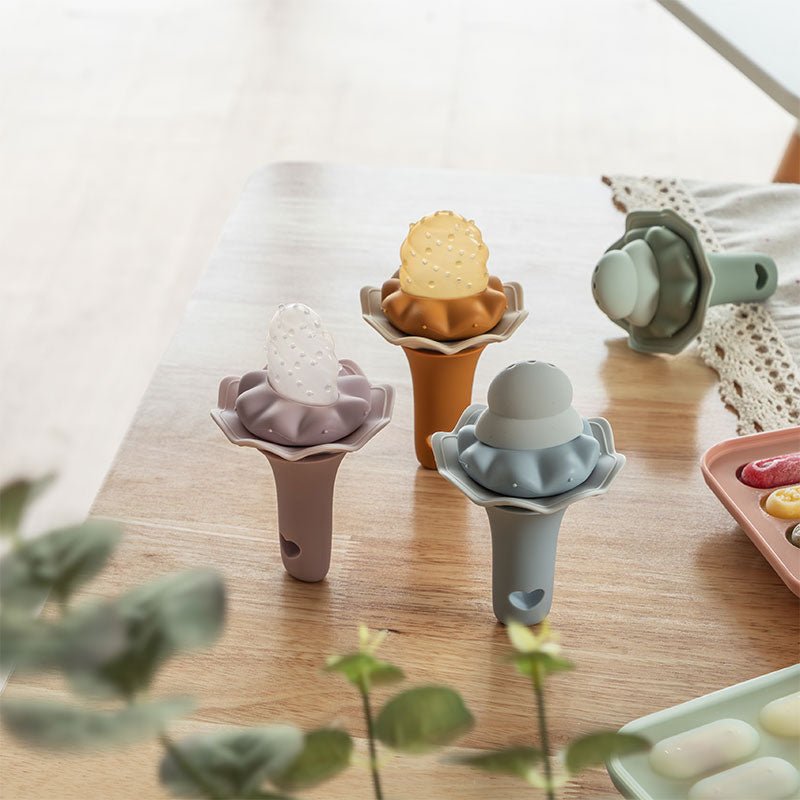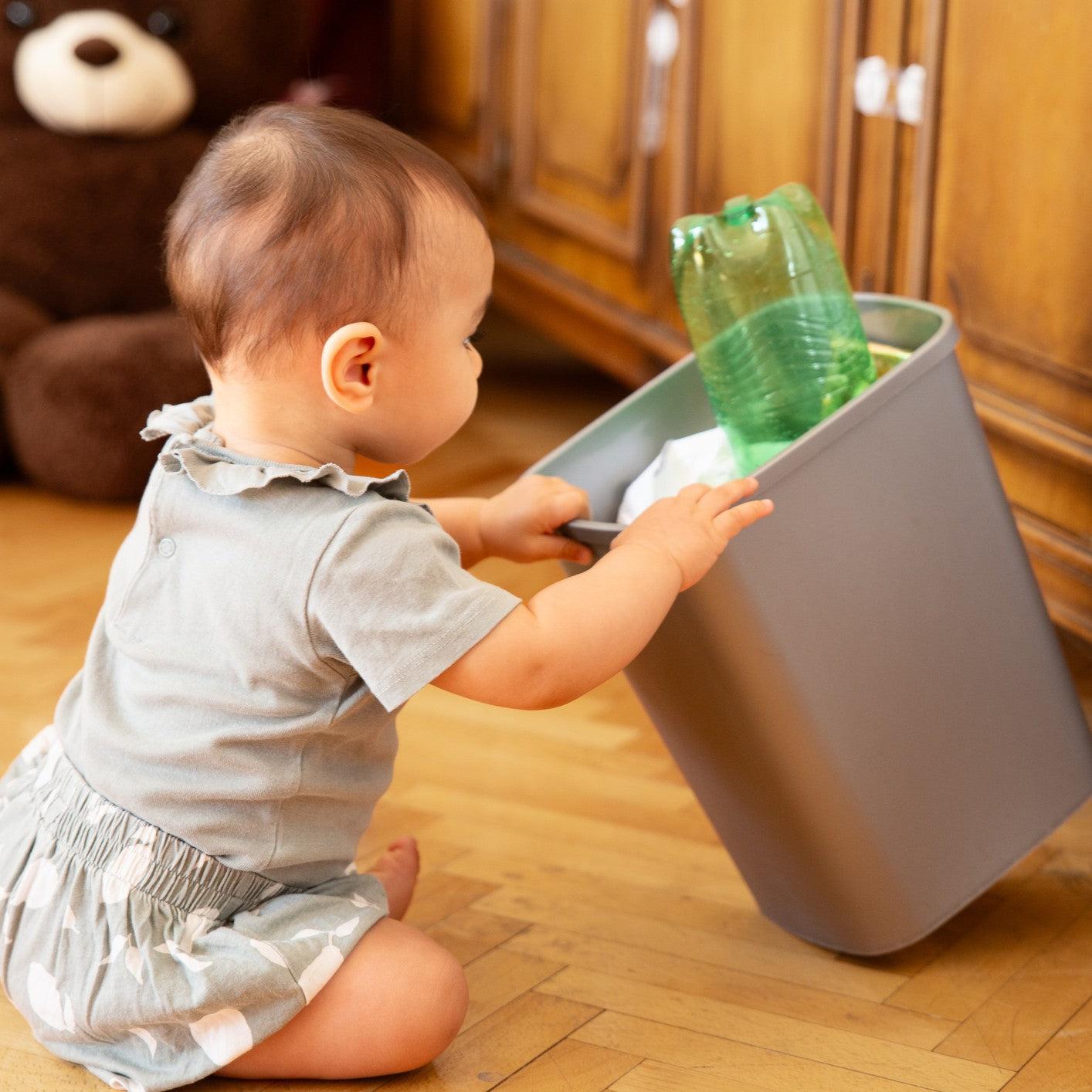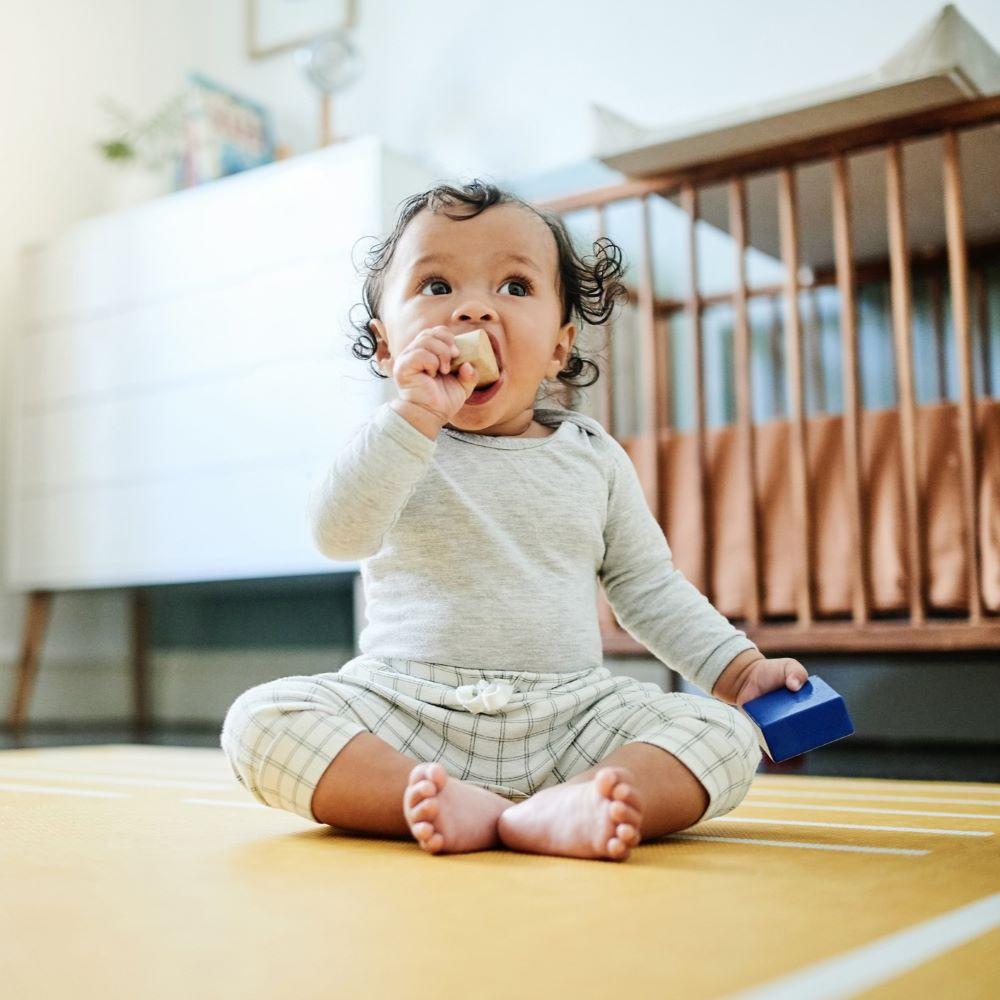You don't have to be a parent long before realizing that babies and toddlers can play with anything, especially the boxes expensive toys come in! When your budget is tight, or your baby is more interested in your stuff rather than her toys, you can make toys at home.
Making toys for your busy baby is a fun way to engage them on a budget. Older babies and toddlers often want to play with what you use at home to "look like mommy." However, you must be careful about strings, sharp edges, and other hazards.
Your baby's skill development and adeptness to get into trouble will shock you! So, avoid giving your baby something that could be harmful when she figures it out (like prescription medicine bottles). The following 10 DIY baby toys are easy to make and fun for your baby, but you should always supervise play with them.
1. Wool Dryer Balls
Wool dryer balls are not intended for babies, but they are irresistible. They are soft, firm, and slightly bouncy, which makes them quiet and easy to grasp. Better yet, when chucked across the room, wool dryer balls won't hurt your walls, pets, or other children.
My babies enjoyed rolling the balls back and forth with me once they were old enough to sit up. They also liked crawling after them and tossing them into a basket as they got older.
Do not let your baby chew on a wool dryer ball. He could loosen the fibers, ingest them, or wrap them around his little fingers.
2. Measuring Cups
Plastic or silicone measuring cups are fun playthings for busy babies and toddlers. Whether your baby prefers banging them on the floor to make "music" or shouting into them to play with sound, you'll find your child mesmerized by a set of measuring cups.
You can go a step further by setting up a shallow bin of things to scoop, like edible rice puffs, cooked macaroni, or sand. Speaking from experience, sit with your baby or toddler as they scoop stuff from a bin. Your baby will likely try to eat the stuff or climb into the bin!
Sensory bins are a fantastic way to promote your baby's innate desire to learn through exploration. Learn about more sensory activities in Baby Sensory Activities: A Guide to Promote Healthy Development.
3. A Cardboard Tunnel
Put those Amazon boxes to use by making a cardboard tunnel for your baby! Using tape and multiple boxes, you can design a fairly sturdy tunnel for your baby to giggle in and crawl through.
I found that reinforcing the corners of a big box from the inside ensured it didn't collapse on my babies as they pushed on or plopped against the walls. If the box is big enough, you can fold the flaps to the inside and tape the top flaps in place, covering half of the openings on either end.
Another way to entertain your busy baby with a cardboard box is to make a boat or car out of it. You can get loads of fun out of pushing the box around! Yet another fun addition to cardboard fun is coloring. Sit your toddler in a big box with a handful of crayons and let him decorate! Keep an eye on him to catch any colorful snacking.
4. An Old Wallet with Gift Cards
Busy babies love handling the things they see you use daily, though most of those things are unsafe for little ones. You would think your baby would love playing with all those toys more than your stuff, but no, that would be too easy. One middle-ground item is an old wallet with gift cards.

My babies spent so much time putting the cards in, taking the cards out, and stuffing other things into the wallet. Once they got older, they pretended to be a shop customer, adding more imaginative play value.
Wallets made of leather, canvas, denim, or cotton are better than faux leather or plastic. Faux leather will start to come apart with chewing or scratching, and plastic wallets are probably not rated for the things your baby could put it through.
If you notice your baby trying to chew on the old gift cards, take them away for a few months. Believe it or not, older babies can fit cards in their mouths, scraping up the inside or falling forward and wounding the back of their mouths.
5. Ragdolls
Ragdolls are classic handmade toys for babies and toddlers, and they can be as simple or complicated as you want to make them. Just ensure no strands of fabric are longer than five inches or can be pulled out. Also, don't use any buttons for the eyes; they are choking hazards.
Here are a few steps to making a simple rag doll:
Gather a few 2-inch wide strips of fabric and cut them to be 16 inches in length.
Sew the long sides of the strips together until you have a 16-by-16-inch square.
Hem all four sides of that square to ensure your little one cannot pull any threads.
Hand stitch two eyes and a mouth halfway between the center and edge of the square.
Place a wool dryer ball in the center of the square.
Gather the square around the ball tightly and stitch right under the ball.
Once your baby is older, you can make a more traditional rag doll. But simple may be better while your baby is crawling, chewing, and practicing those pitching skills!
6. A Ball in a Box
For whatever reason, my babies were enthralled with a racquetball in a clear Tupperware box. Perhaps it was the sound of the ball when they shook the box or the thrill of trying to get it out.
You could mix this up by adding other baby-safe items to the box. Just be prepared for a lot of clanking noise and squealing!
7. Sensory Bottles
Sensory bottles are cheap and fascinating to babies! Take an empty clear plastic bottle, fill it two-thirds full with sand or uncooked rice, and put interesting little things inside, like colorful marbles, flowers, or painted rocks. Then glue the cap back on.

As your baby rolls the bottle around or shakes it, she will discover the hidden treasures! However, you should not let your baby play with a sensory bottle alone because it is full of choking hazards.
8. Buckets
My babies and toddlers got loads of fun out of buckets sized perfectly for them. While sitting and crawling, they would drop toys inside and knock them over repeatedly. When they could walk, they would carry stuff with them wherever they went!
The type of bucket you choose matters. Buckets with a metal handle and plastic or metal pails can pinch little fingers or cause injury in a fall. Plastic buckets can break when stepped on, especially if they weaken in heat and sunshine. Broken plastic can scratch up or cut your little one.
We've designed a sturdy and durable silicone pail for playing at the beach. It is flexible to avoid harming your little one in a fall but stiff enough to carry sand or rocks. Made of food-grade silicone, it is long-lasting, easy to clean, and safe for teething!
9. A Pleasantly Clackety Key Ring
Many babies are enchanted by keys (which is probably why they disappear so easily once your baby begins walking). However, a ring full of metal keys is not safe for them or helpful to you. So, make a key ring of laminate tile samples.
Laminate is not something your baby should chew on, but the delightful clanking sound, array of colors, and variety in textures are a sensory delight!
10. Small Empty Boxes
Do you get small boxes in the mail? If so, save them up for your little one. I used to break them down and save them in a stack through the Christmas season. Then, sometime in the dreary January or February cabin fever season, I would pull them out, pop them back up, tape their lids shut, and surprise the kids.
Babies, toddlers, and young children alike can get hours of fun out of twenty or thirty small cardboard boxes. We made forts, colored them, built towers, and organized cities for our toy cars and dolls.
Honestly, babies just like knocking them down, but that is an easy tendency to incorporate into older siblings' imaginative play ("Flee the Monster Baby!").
5 Things to Watch Out for in Handmade Baby Toys
DIY toys are fun, but if you lack storage space or just don't want to use disposable items to make baby toys for an afternoon, you can purchase handmade baby toys. Handmade baby toys make nostalgic or thoughtful gifts and add a touch of homeliness to your little one's room.

However, handmade toys can have their pitfalls. Handmade baby toys from a small online Etsy shop have likely not undergone testing for safety standards, so you buy them at your own risk. As such, it is prudent to keep an eye on your little one as she plays with handmade baby toys.
You can get ahead of any trouble by avoiding handmade toys with the following characteristics:
1. Buttons
Buttons make adorable doll outfit closures and eyes, but an infant can chew them off and swallow them.
If you have baby toys with buttons, you can cut them off and stitch eyes in place. It would take a lot more talent to chew up stitched eyes!
2. Strings
Strings, strips of fabric, hair, ties, and other long, thin ropes are dangerous choking hazards for babies. Babies can swallow these, chew them off, or wrap them around their necks (source).
One lesser-known concern is thread and hair getting wrapped around a finger or toe tightly enough to cut off blood circulation. This happened to one of my babies when they managed to pull a hair out of her cousin's doll. Her finger was already discolored and swollen when I discovered what she was crying about.
3. Filler
Whatever a cute toy animal or doll is stuffed with matters because your little one may figure out how to rip an arm or leg off. Reaching a toy's stuffing is not only annoying for cleanup but can also be a choking hazard.
Ragdolls stuffed with fabric scraps are also a choking hazard, so you should avoid them until your baby outgrows the desire to chew on them.
4. Tiny Pieces
Tiny tea sets, jewelry, and other small objects are irresistible to babies and toddlers, but they are not safe. Anything your little one can fit into his mouth will likely go there, so please avoid giving tiny objects to him (source).
Batteries are especially dangerous because some, like button batteries, can react with your baby's saliva and burn a hole in his esophagus (source). Don't assume that your little one cannot reach the batteries; he may find a way!
My son managed to break the back panel of a battery-operated toy when he was just 8 months old. He picked it up and bashed it on the corner of a wooden chair just right to crack the plastic panel covering the batteries. Another solid whack on the tile floor broke it off and scattered the batteries.
If I hadn't been paying attention, my baby boy might have swallowed a battery that day!
5. Wooden Toys
Handmade wooden toys are a mixed bag. They can be gorgeous and fun if made properly, sanded smooth, and stained with a baby-safe stain or sealer (or unstained). However, painted wood or cheap wood that splinters easily is a hazard.

Wooden toys with removable pegs or wooden beads are dangerous choking hazards because one good knock on a hard floor can free those pieces.
Wooden toys that are not sealed are tough to clean because they soak up water or whatever chemicals you wipe them off with. So, the more you clean them, the more likely it is that your teething baby will ingest harmful chemicals.
So, if you plan to give your baby handmade wooden toys, ensure that they are well-built, sturdy, devoid of small pieces (even if they are glued in place), and have no sharp edges or corners.
Cleaning baby toys is tricky because different materials must be cleaned in different ways. Not everything can be sprayed with Lysol or wiped down with bleach and water! Read more in The Dos and Don'ts of Disinfecting Baby Toys: A Comprehensive Guide.
In a Nutshell
DIY baby toys are an excellent way to give your baby a sensory experience with everyday items. However, you need to supervise your baby closely while she plays with them. The same goes for handmade baby toys. They are wonderfully nostalgic, adorable, and fun, but they are likely untested and possibly dangerous.
Use common sense, assume your baby can do more than you think, and watch your baby closely as she plays.

